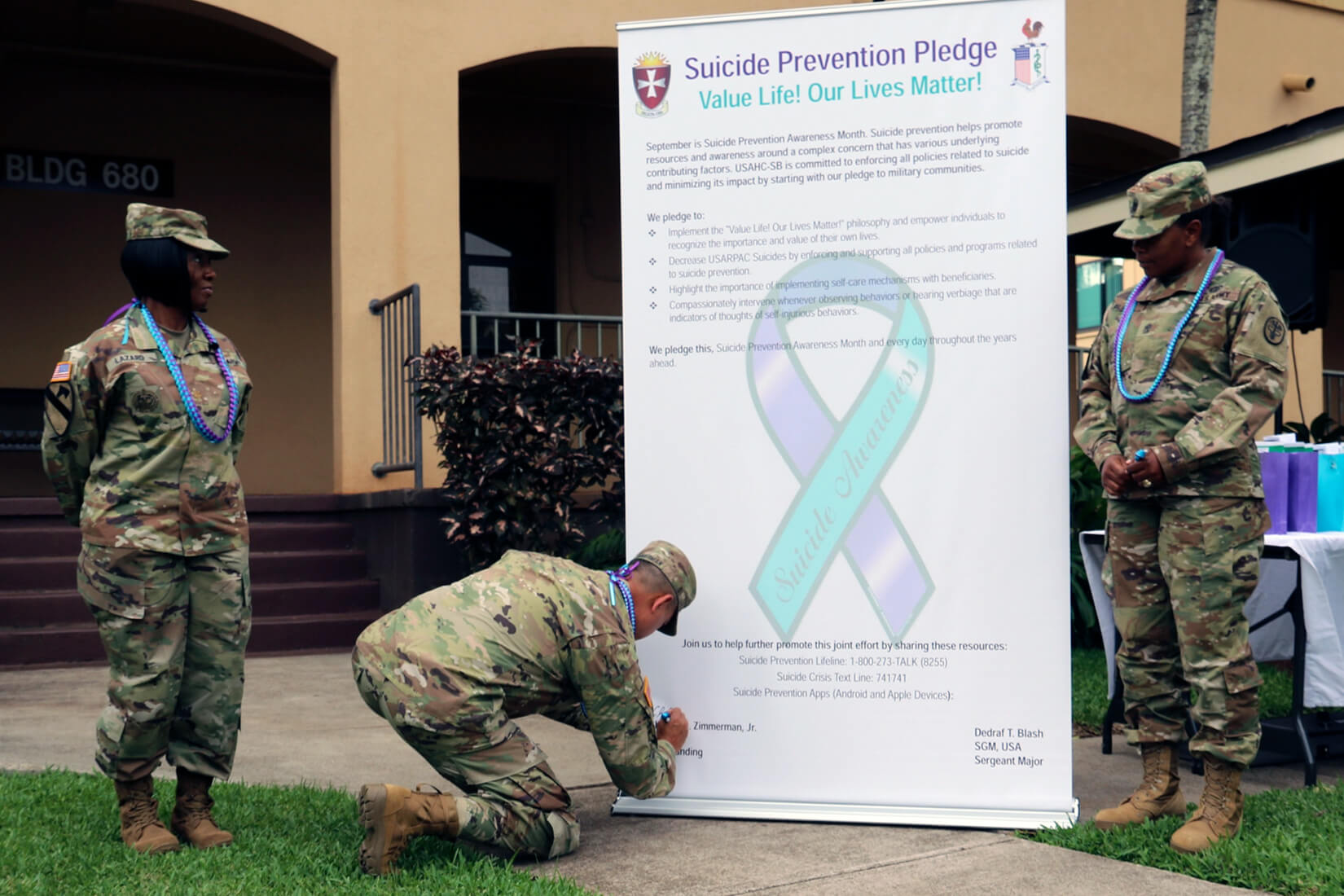
BETHESDA, MD—While mental health conditions are a strong predictor of who is likely to try to take their own life, that doesn’t account for a sizeable percentage of soldiers at risk of suicide, according to a new study.
In fact, recent research published in JAMA Psychiatry found 36% of soldiers who attempted suicide had no prior mental health diagnosis.1
“Among soldiers, as in the general population, mental health disorders are consistent predictors of suicide attempt and death. However, only 60% of enlisted soldiers with a documented suicide attempt and less than 50% of soldiers who died by suicide actually received a prior mental health diagnosis,” the authors said.

Still, soldiers without a mental health diagnosis share risk factors for suicide with soldiers who do have a diagnosis, according to lead author Robert J. Ursano, MD, professor of psychiatry and neuroscience and director of the Center for the Study of Traumatic Stress at the Uniformed Services University of Health Sciences in Bethesda, Maryland.
“After a family violence event or a legal event or injury, there is increased risk. Also, those at risk are frequent users of outpatient health care,” Ursano told U.S. Medicine.
Family violence increased the odds of a suicide attempt nearly threefold in soldiers without a mental health diagnosis. Subjection to minor violent crime increased the odds 60%, while crime perpetration doubled the odds in this group.
Outpatient visits provide a critical opportunity to identify these at-risk servicemembers. “Primary care is of great importance in detecting and intervening for this group,” Ursano said. The study found that 72% of soldiers who attempted suicide and did not have a mental health diagnosis had seen a healthcare practitioner in the two months before their attempt.
The study indicated that primary care practitioners often have multiple occasions to interact with these at-risk servicemembers in the months before a suicide attempt. In fact, high utilization of outpatient services might be a red flag. Soldiers without a mental health diagnosis who had eight or more outpatient physical healthcare visits in the past two months had more than three times the odds of attempting suicide.
An injury in the prior month that required outpatient care also tripled the odds of a suicide attempt, while a recent injury that required inpatient care increased the odds nearly four times among those without an identified mental health disorder. A previous combat injury also increased the odds of a suicide attempt.
Being female, having less than a high school education and experiencing a delay in promotion or a demotion in the past year also heightened the risk of a suicide attempt in soldiers with and without mental health diagnoses. The odds of a suicide attempt associated with these factors were much higher in individuals without a prior mental health diagnosis, however.
In addition, two risk factors appeared unique or far more impactful to those without a mental health diagnosis. Enlisting before age 21 increased the risk of suicide attempt only in this group. Among soldiers without a mental health diagnosis who attempted suicide, 60% did so during their first year of service, compared to 21% of those with an established mental health diagnosis.
The investigators analyzed records from the Army Study to Assess Risk and Resilience in Servicemembers (Army STARRS) of 9,650 enlisted soldiers who attempted suicide between Jan. 1, 2004, and Dec. 31, 2009. They were compared to an equal-probability sample of 153,528 controls. Mental health diagnosis information and data on crime exposure and perpetration, family violence, health care and sociodemographic came from other Army records.
Integrated Care
The high proportion of individuals without a mental health diagnosis who attempted suicide in this study might actually understate the risk. That more than one-third of soldiers who attempted suicide had no mental health diagnosis “is particularly notable given the study’s liberal definition of mental health diagnosis, which included a single diagnosis by any type of clinician, including mental health-related V-codes, such as marital problems and other stressors,” according to an editorial published in JAMA Psychology along with the study.2
The editorial’s authors suggested that many at-risk soldiers may not have benefited from the U.S. Army’s established mental health screening and intervention efforts.
Ursano agreed. “It is important to note that some of these soldiers have an undetected mental health diagnosis,” he said. “They are having some challenges that have not made their way into the healthcare system.”
The study authors observed that many factors may contribute to mental health issues going undiagnosed in soldiers, including a lack of perceived need for treatment, lack of mental health assessment during medical evaluations, failure to report symptoms at post-deployment screenings, positive screenings where soldiers did not follow through with the referral and referred soldiers who do not receive a mental health diagnosis.
Since the time frame of the study, the Army has taken significant steps to expand access to and reduce the stigma associated with mental healthcare. Embedded Behavior Health teams staffed with one mental health specialist per battalion are now often located within walking distance of barracks on military installations, according to the editorialists. Uniformed behavioral health practitioners also operate as part of units and deploy with them.
The Army also has integrated behavioral health into primary care settings, a change Ursano considered critical for reducing suicide attempts among Army personnel. “Prevention of suicide attempts for these soldiers is aided by the close relationship of primary care providers and health care points of contact with mental/behavioral care providers. An integrated and collaborative approach is important to identifying those at risk.”
1. Ursano RJ, Kessler RC, Naifeh JA, Herberman Mash HB, Nock MK, Aliaga PA, Fullerton CS, Wynn GH, Ng THH, Dinh HM, Sampson NA, Kao TC, Heeringa SG, Stein MB. Risk Factors Associated With Attempted Suicide Among US Army Soldiers Without a History of Mental Health Diagnosis. JAMA Psychiatry. 2018 Aug 29.
2. Reger MA, Smolenski DJ, Carter SP. Suicide Prevention in the US Army: A Mission for More Than Mental Health Clinicians. JAMA Psychiatry. 2018 Aug 29.

